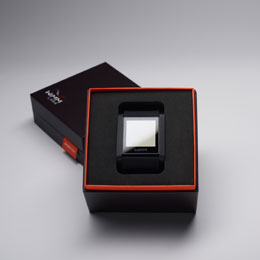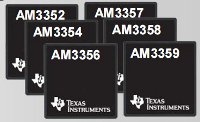Google has just released Android Native Development Kit Revision 7, the Android SDK that allows developers to reuse C/C++ code. This version adds new native APIs available in Android 4.0. Here’s the changelog of the most important new features and bug fixes: NDK APIs for Android 4.0 (API level 14): Low-level streaming multimedia: A new API based on Khronos OpenMAX AL 1.0.1 provides a direct, efficient path for low-level streaming multimedia. The new path is ideal for applications that need to maintain complete control over media data before passing it to the platform for presentation. Audio decoding into PCM: Extensions to the existing native audio API based on Khronos OpenSL ES let native apps decode compressed audio assets to PCM format. CCache support to allow faster rebuilds. Added support for setting APP_ABI to all to indicate that you want to build your NDK modules for all the ABIs supported by […]
Linaro’s Android Platform – ELCE 2011
Zach Pfeffer, Linaro Android Platform team leader, describes Linaro’s work on the Android platform and future plans at Embedded Linux Conference Europe 2011. Abstract: Linaro uses components from the Android Open Source Project, member companies, community supported efforts and Linaro engineering teams to build integrated, easy-to-use and well tested Android platforms for upstream work, product baselines and hobby projects. The team currently has platforms for TIs PandaBoard, BeagleBoard and Beagle xM, ST Ericsson’s Snowball, Samsung’s Origen and Freescale’s iMX53. They recently released platforms with Android 2.3.4 built against GCC 4.6 and running the 3.0 Linux kernel. In this session Zach reviews what’s been done, the Linaro Android concept, how Linaro brings Android together and what their plans are. Jean-Luc Aufranc (CNXSoft)Jean-Luc started CNX Software in 2010 as a part-time endeavor, before quitting his job as a software engineering manager, and starting to write daily news, and reviews full time later […]
Build Community Android Distribution and Ensure the Quality – ELCE 2011
Jim Huang, developer and co-founder of 0xlab, explains how they built an Android distribution with Linaro at Embedded Linux Conference Europe 2011. Abstract: While developing Android distributions, 0xdroid and LEB (Linaro Evaluation Build), we learn much about the development approach to non-traditional open source software model such as Android Open Source Project. This session shares the experience how 0xlab established the community, contributes to upstream (in unusual way), and leveraged the strong efforts from Linaro. Also, 0xlab develops a serial of open source projects to ensure overall performance and quality for better user experience. Jean-Luc Aufranc (CNXSoft)Jean-Luc started CNX Software in 2010 as a part-time endeavor, before quitting his job as a software engineering manager, and starting to write daily news, and reviews full time later in 2011. www.cnx-software.com
WIMM One Developer Preview Kit is Now Available
WIMM Labs has just announced the availability of its wearable Android-based reference platform and software development kit. It can be purchased for 299 US dollar and is only available in the US. It is currently only available to registered developers but will be available to all by the 9th of November. The WIMM One Developer Preview Kit includes: WIMM One Module Black wrist strap Charging kit: Paddle charger, USB cable, USB power adapter Here’s the email registered developers received: We are thrilled that you expressed early interest in the WIMM One Developer Preview and we’d like to invite you to be among the first to purchase a WIMM One during our limited release. From now until November 9, the store will only be open to those who’ve reserved in advance. Just register at dev.wimm.com using this email address and purchase your WIMM One Preview for $299. Inventory is limited and […]
Android Platform Optimizations – ELCE 2011
Ruud Derwig and Mischa Jonker, both working at Synopsys, present different Android optimization methods at Embedded Linux Conference Europe 2011. Abstract: Although compute platforms gain performance with every new generation, getting the most out of every cycle and milliwatt remains a key value driver for Consumer Electronics. This presentation opens up the Android platform and explain what platform components and frameworks can benefit from performance optimizations. The optimizations are illustrated using real-life examples from the porting and optimization of the Android platform for the DesignWare ARC CPU. Both Android platform and application developers will gain insight in how to improve Android performance. Topics that are addressed include the Pixelflinger, Linux kernel and drivers, Javascript engine, Bionic C library, and the Dalvik VM. We’ll demonstrate the portability of Android and suitability of the ARC architecture for building efficiently Android systems. You can also download the presentation slides. Jean-Luc Aufranc (CNXSoft)Jean-Luc started […]
Linaro Android Tutorial with the Pandaboard
Zach Pfeffer, the tech lead of the Linaro Android working group, gave a tutorial about Linaro Android at Linaro Connect Q4.11. During this tutorial, attendees were shown how to download a recent build for the pandaboard, how to make a bootable SD card image using the linaro-android-media-create command and how to boot the board with it. The full setup was composed of a Pandaboard connected to a HDMI monitor with a keyboard and mouse connected to the board as well as serial to USB cable to connect to the development machine. He also used an SD card reader to generate the bootable Android image. The images are available at Android Linaro Build Service. There are quite a few build named after the supported board (e..g panda for pandaboard, snowball for ST Ericsson Snowball etc..) and the kernel version (tracking = latest linaro kernel, staging = stable linaro kernel). Then an […]
TI Unveils Sitara AM335x ARM Series Cortex-A8 Processors
Texas Instruments has just announced the new Sitara AM335X Processors and the low cost Beaglebone development board. The low cost Cortex-A8 SoCs start at 5 US dollars per piece and are aimed at upgrading ARM9 solutions (software compatible) and adding new features such as 3D interfaces and touch screen, high resolution displays with faster performance. Texas Instruments says you could take those new upgraded products to market within 6 months thanks to their inexpensive development board (Beaglebone) and complete SDK. There are six models in the Sitara AM335X series: AM3552: Cortex A8 up to 720 MHz. AM3554: Cortex A8 up to 720 MHz with 3D Graphics (PowerVR SGX GPU). AM3556: Cortex A8 up to 720 MHz with programmable real-time unit (PRU) @ 200 Mhz. AM3557: Cortex A8 up to 720 MHz with PRU @ 200Mhz and EtherCat. AM3558: Cortex A8 up to 720 MHz with 3D Graphics and PRU @ […]
Run 2 OS Simultaneously on ARM (OMAP4) with Codezero Embedded Hypervisor
B Labs, a company specializing in ARM Virtualization, was at ARM Techcon 2011 showcasing Codezero, their Embedded Hypervisor to run multiple Linux OS such as Android and Chrome OS on ARM processors. The main purpose of running 2 operating systems is to separate home and enterprise operating systems in mobile devices so that enterprise data is safe. Charbax (ARMDevices.net) interviewed Bahadir Baldan, founder of B Labs, and showed a demo running 2 Android instances and another running Android and Linux in pandaboard. The overhead is 10 to 15% according to B Labs, so the performance hit is minimal. They have already managed to run 4 OS on quad core processors with good performance. They are not able to run Windows operating systems (e.g. Windows Mobile 7.5/ Windows 8) yet, because Cortex A9 processors lack virtualization extensions. This will however be feasible with Cortex A15 processors as binary virtualization will be available. […]





